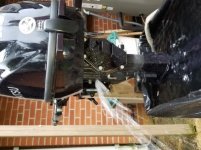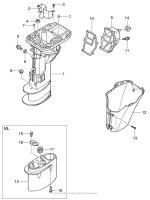Recently, I made a mistake that has screwed up my 2018 Tohatsu 9.8 four stroke (with less than 50 hours on it). After using the motor in salt water I attached the flushing tool to a garden hose and flushed the motor. Unfortunately, when I removed the flushing tool I forgot to replace the screw in the lower housing. The next day I ran the motor for about 20 minutes before noticing that the "pee" stream was not working. I shut the engine off, discovered and replaced the missing screw, but was unable to re-start the motor until a half hour later. When it finally restarted, there was no pee stream (which is usually pretty strong). I thought maybe the impeller had broken apart, but it still seemed in pretty good shape. I replaced the impeller anyway. On starting the motor, it seemed to be pumping strong, but no water exited the pee hole. There was lots of water, however, flowing out of the lower housing. (I haven't taken the housing apart to see exactly where it's coming from.) I again removed the lower unit and connected some plastic tubing to the metal uptake tube and pumped water into it. I also opened up the thermostat housing. No water came out of the thermostat housing or the pee hole; but still lots of water pouring out of the lower housing. I looked up into where the uptake pipe connects to the power head and that seems to be firmly attached. In summary, something seems to be blocking the flow of water. Any suggestions as to what the problem is or what else I can do to diagnose??
Bernard
Bernard



